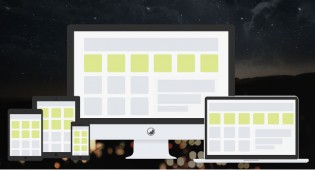Optimizing Landing Pages for Search Engines and Web Users
If you’re hoping to get traffic to your website, then you need to think about how you will optimize your website’s landing pages for search engines, while still keeping in mind that Web users will be viewing these pages and evaluating your website based on what they see. This article offers 10 steps for building SEO friendly and user friendly landing pages.
When arriving on a landing page, Web users are looking for the following factors:
- Does the page load fast?
- Have they come to the right page?
- Does the page fulfill what they are looking for?
- Does the page appear to be from a reliable and trustworthy source?
- Is there an easy to find and understandable call to action?
Failure to meet any of these factors on your landing pages may result in the user hitting the back button and returning to the search engine results pages.
[SIZE=3]Landing Pages and Search Engine Crawlers[/SIZE]
Search engines analyse the content and code within pages of a website and consider factors such as the:
- Page URL
- The Title Tag
- Keyword Meta Tag
- Description Meta Tag
- Headings
- Page Content
- Images/Alt tags
- Links (Anchor text)
Spending the extra time and work to improve your landing pages will improve your rankings and ensure you meet your conversion goals.
[SIZE=2]1. URLs[/SIZE]
URLs are visible in the search engine results pages (SERP’s) and play a contributing factor in a successful click-through rate (CTR). URLs with long query strings may confuse search engine spiders and prevent them from reaching some of the site’s valuable content.
Create URLs following the steps below:
[LIST=1]
[/LIST]
A good example of a search engine friendly URL would be:
[URL]http://www.mysite.com/dating-london[/URL]
Note: In this document I am going to use as an example a dating website for Londoners.
[SIZE=2]2. The Title Tag[/SIZE]
Text in the Title Tag plays a significant part in successful SEO, and is displayed prominently on search engine results pages, meaning it can be a winning factor for high click-through rates. The title tag is also crucial for search engine crawlers.
Create the Title Tag following the steps below:
[LIST=1]
[/LIST]
A good example of the title tag would be:
[SIZE=2]3. META Description Tag[/SIZE]
The content from this tag displays itself under the title tag in the SERP’s. The Description Tag is crucial for search engine crawlers and a persuasive factor for web users interested in your products or services.
Create the Description Tag following the steps below:
[LIST=1]
[/LIST]
A good example of the Description Tag would be:
[SIZE=2]5. Body Content[/SIZE]
Search engines use the content in the body of a Web page to determine a number of factors. Most importantly they try to determine what the subject of the page is. It’s also vital to think of what keywords a searcher would use to find content like yours.
[LIST=1]
[/LIST]
[SIZE=2]6. Headings and Subheadings[/SIZE]
Liveshow
Search Engine Crawlers view the text inside heading tags as important. They also describe the content of the page/paragraph to the user. In HTML the headings tag is based on a hierarchal structure ranging from
to
with
holding the most weight in search engines.
holding the most weight in search engines.
[LIST=1]
[/LIST]
Main Subject Heading. This should not be repeated
2nd Heading, this tag can be used multiple times
The 3rd Heading, this tag can be used multiple times
[SIZE=2]7. Navigation Structure[/SIZE]
Avoid using JavaScript, Flash or image maps for links. Search engines generally only read HTML source code. They are making advances into indexing JavaScript and Flash but they still have a long way to go. Pages with unfriendly navigation or linking structures will not always be followed by the crawlers and some pages will not be indexed.
[SIZE=2]
8. Breadcrumb Navigation[/SIZE]
Providing navigational assistance to users and crawlers, breadcrumb navigation shows the path to the current location. The breadcrumb navigation is generally situated above the main content on a page. Using text based links, this navigation helps crawlers to determine keyword relevancy.
E.g. Home > Date > London > Girls
9. The Alt Tag
The Alt Tag (Alternative Tag) displays text to a user when the image is missing. Its primary use is to accommodate text browsers or browsers with the image function disabled. It also assists visually impaired users that are using a screen reader. With some search engines the Alt Tag will help improve the text content of your landing page for search purposes.
[LIST=1]
[/LIST]

[SIZE=2]10. Images/Flash [/SIZE]
Using un-optimised images or Flash on landing pages is a major reason why Web users return to the SERP’s before the landing page is downloaded. Large images slow down the page time and frustrate the Web user, thus becoming a usability issue.
[LIST=1]
[/LIST]
[SIZE=4]CREDITS[/SIZE]
This article was submitted to YNOT Europe by RIVcash, and the RIVcash team hopes you have enjoyed it. For more information about RIVCash, please visit www.rivcash.com.
Comments are closed.






